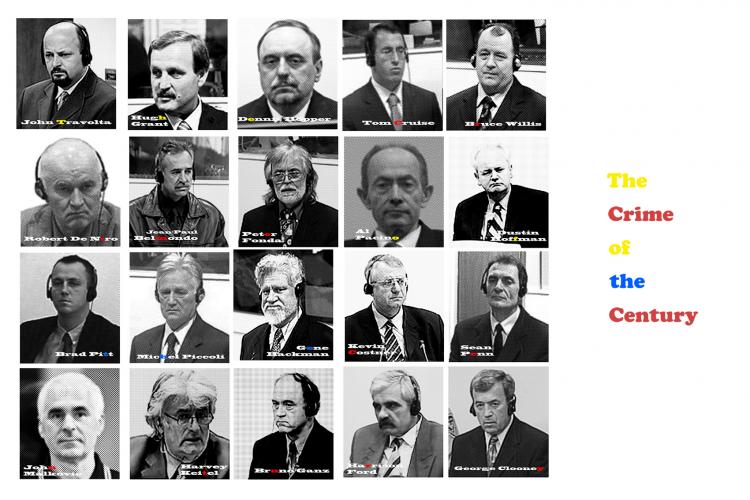Digital silkscreen on dibond, each panel 40x44.5 cm
Acrylic wall painting, after Mondrian, 240x360 cm
Wood table, after Gerrit Rietveld, with turntable (looped), amp+speakers
12 inch record Yugoslavia (Folkways 1958)
Installation view, Printemps de Septembre 2012, Lieu Commun, Toulouse
Since more than 20 years, Christoph Draeger researches themes of destruction, violence and catastrophe in his work. By combining the reality of disasters with the fiction of movies, Draeger often creates his own interpretation of an event. This is also the case in the installation Mondrian Criminals: The Crime of the Century. Draeger made the first version of the installation for an exhibition at gallery West, in The Hague, a city in the Nederlands that inspired the piece for two reasons: the Gemeentemuseum Den Haag which holds the greatest collection of Mondrians in Europe, and the International Criminal Court for Yugoslavia, with its attached prison, holding all accused and convicted war criminals by this court.
Mondrian Criminals: The Crime of the Century shows pixelized black+white portraits of twenty war criminals (all of them convicted for 20 years or more) who had to appear at the International Criminal Court in The Hagua. The installation is inspired by the city Draeger made it for, but also by his family connection to Yugoslavia, where his father is from - as well as his grandfather who died in Slovenia at the end of WWII.
The colored letters on the portraits form together the title of the work and point to the title of a possible later film: The Crime of the Century. They are compiled in the colors red, yellow and blue, the colors of ‘De Stijl’. By associating the portraits of war criminals with names of big Hollywood actors the installation becomes the announcement for a new film. Draeger links protagonists of the Hollywood fiction machine with the reality of the civil war and violence that occurred in former Yugoslavia. The surreality of these events are perfectly suitable for a Hollywood blockbuster, said Draeger. However, even though there are many movies about WW1+2, Vietnam, Iraq, there are close to none about the war in Yugoslavia, the worst conflict in Europe since 1945.
For the final version of the piece, presented at the Printemps de Septembre in Toulouse 2012, and the Mondriaanhuis in Amersfoort (NL) 2013, Draeger added a soundtrack (a Folkways compilation played in a loop on a turntable posed on a Rietfeld table) and a Mondrian inspired wall. Mondrian still is one of the most important figures in art history and in this case is used as a symbol for the pop-art-like popularity that the De Stijl language still has. It fits perfectly within the statement Draeger intends to make about his yet-to-be-realized film.
Text by Marjory Degen, curator, Mondriaanhuis, Amersfoort (NL)



